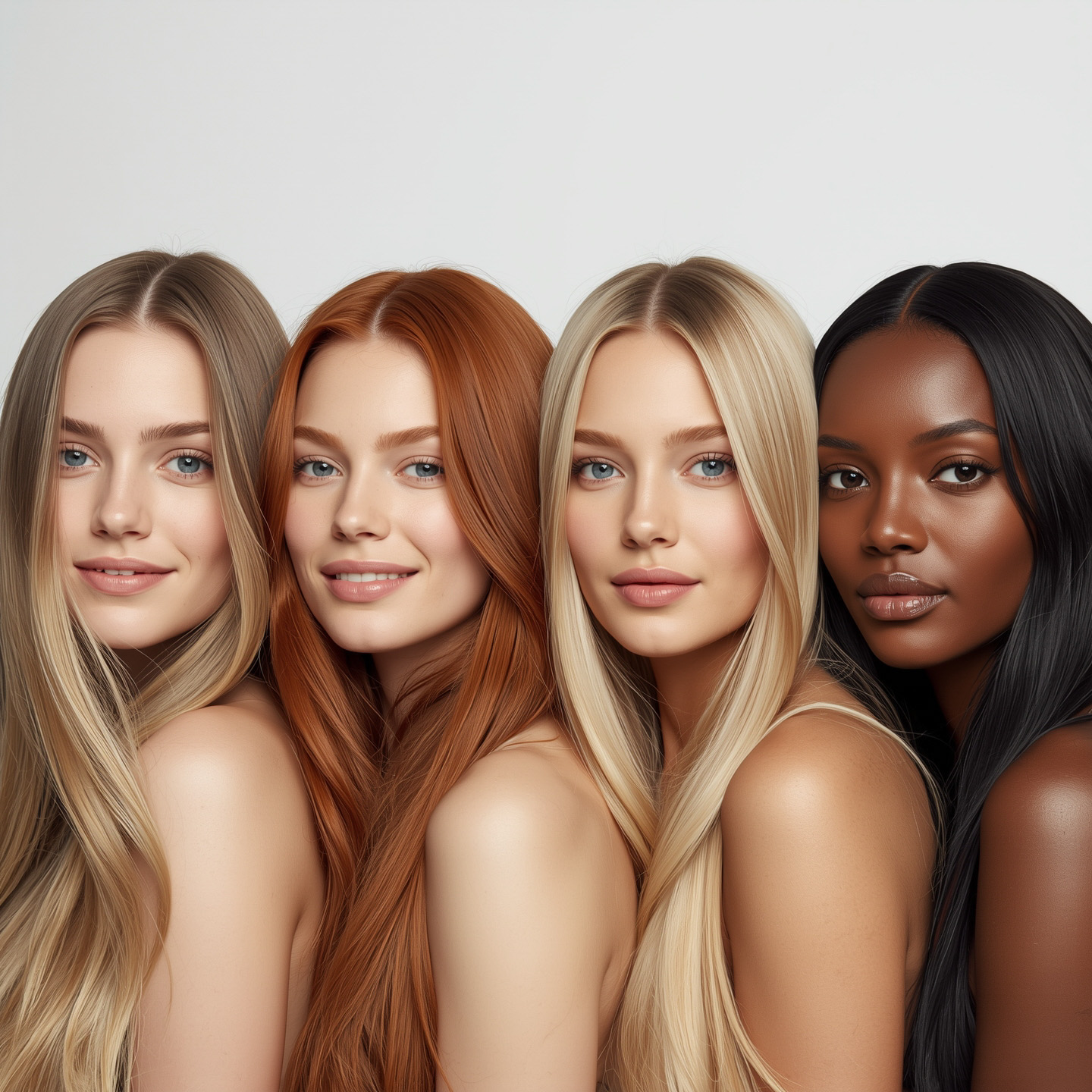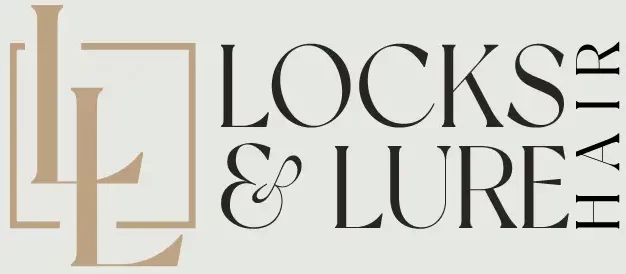
What Are Russian Hair Extensions?
Russian hair extensions are made from human hair that is sourced from donors in Russia and other Eastern European countries. Russian hair is characterized by its finer to medium strand thickness, a wide variety of natural colors including light browns, dark blondes, and even lighter shades, along with being exceptionally soft and silky. The finer to medium texture blends very well with many Caucasian hair types, which also tend to have finer strands. The softness and silky feel are highly valued for comfort and natural movement. In fact what makes Russian hair extensions highly sought after is their naturally lighter shades which mean less chemical processing (particularly bleaching) is required to achieve popular blonde and light brown extensions compared to starting with very dark hair. Less processing means keeping the hair’s cuticle integrity and overall health in its best possible condition.
Are Russian Hair Extensions the Same as Slavic Hair Extensions?
While not strictly the exact same geographically or ethnically, the terms “Russian hair extensions” and “Slavic hair extensions” are used interchangeably, as “Slavic hair” is and umbrella term that covers hair sourced from Russia and other Slavic-speaking countries in Eastern Europe (Belarus, Serbia, Ukraine, etc). Hair from this region shares the characteristics of “Russian” or “Slavic” hair extensions: generally finer to medium strand thickness, a range of natural lighter colors, and exceptional softness and silkiness.
Can You Dye Russian Hair Extensions?
Absolutely, Russian hair extensions are well-suited for dyeing. Their natural range of lighter shades, from light brown to blonde, provides a distinct advantage for coloring, as achieving many desired shades often requires less intensive chemical processing, including bleaching, compared to starting with significantly darker hair. This makes Russian hair a particularly versatile choice for achieving various custom colors while potentially preserving the hair’s integrity.
Can You Style Russian Hair Extensions with Heating Tools?
Yes, you can style Russian hair extensions with heat tools like curling irons, straighteners, and blow dryers. Since they are made from real human hair, they will behave and tolerate heat just like your natural hair. However minimally processed Russian hair will handle heat better than hair that has been heavily bleached or chemically treated. Think about it like this: intensive chemical processing, like bleaching, makes the hair weaker and more fragile by damaging its inner core and outer layer (the cuticle). Heat styling also makes hair lose moisture, and moisture is what keeps hair flexible and strong.
So, when you apply heat to hair that’s already weak and dry from heavy processing, you’re removing even more moisture from something that’s already brittle. This causes it to snap, break, or become severely damaged very easily.
Hair that’s minimally processed is much stronger and holds onto its natural moisture better. It’s more flexible. When you apply heat, it can withstand the moisture removal and stress better because its structure is healthier and more resilient. The heat doesn’t make it instantly brittle like it does with already damaged hair.
How do you Wash & Maintain Russian Hair Extensions?
Just as with all high-quality hair extensions, gentle washing and maintenance are key for preserving the quality and lifespan of Russian hair extensions. To wash you simply gently detangle the hair before applying a sulfate-free, moisturizing shampoo in a downward motion with lukewarm or cool water. Washing in a downward motion is important because it helps keep the hair cuticles lying flat and smoothly aligned from root to tip. Rubbing hair vigorously or washing in circular or upward motions can rough up the cuticle scales, causing them to lift and snag on each other, which leads to tangling and matting, especially with extensions where the hair isn’t attached to a living scalp receiving natural oils.
Using lukewarm or cool water is recommended because hot water can open the hair cuticle (making the hair more prone to frizz and damage) and can also potentially weaken the adhesive or bonds used for certain types of extensions, leading to slippage or loosening over time. Cooler water helps keep the cuticle smooth and closed, which preserves shine, reduces frizz, and is gentler on the attachment points.
As you do this, also be careful to avoid rubbing the hair vigorously or scrubbing the attachment points. The extensions should then be rinsed thoroughly using lukewarm or cool water, following the same downward motion as when washing. It’s important to ensure that all shampoo and conditioner residue is completely washed out, as leftover product can cause the hair to feel heavy, look dull, or become sticky and prone to tangling over time. Rinsing with cool water, particularly for the final rinse after conditioning, helps to close the hair cuticle, enhancing shine and reducing frizz.
When conditioning Russian hair extensions, apply a high-quality, moisturizing product from the mid-lengths to the ends, strictly avoiding the attachment points to prevent slippage, and rinse thoroughly with cool water to help seal the cuticle.
For drying simply squeeze out excess water with a towel without rubbing, and ideally allow the extensions to air dry naturally; if blow drying is necessary, always use a heat protectant spray and a low-to-medium heat setting, ensuring the attachment points are completely dry.
General maintenance involves regular, gentle detangling and brushing using an extension brush or wide-tooth comb, starting from the ends and working upwards while holding the hair at the root to avoid pulling. For sleeping, it’s always a good idea to secure the hair in a loose braid or ponytail and lay your head preferably on a silk pillowcase, let me explain why. When your hair, particularly extensions, is loose against a pillow it gets rubbed and tangled as you shift and turn through your night’s sleep. Securing your hair in a braid or ponytail keeps it contained and stops it from collecting or matting over the course of the night. Silk is super smooth and products minimal friction onto your hair resulting in less tangling, knotting, frizz, and breakage while you sleep.
How do Russian Hair extensions hold up in rain & humidity?
How well Russian hair extensions hold up in both rain and humidity is primarily determined by their texture, overall quality, and the extent of processing they’ve undergone. The natural tendency of Russian hair towards straight or soft wavy textures means it generally handles damp conditions reasonably well, typically resulting in some loss of volume or enhanced wave rather than significant frizz. However, the most critical factor influencing performance in both rain and humidity is the integrity of the cuticle. High-quality, minimally processed Russian hair possesses intact cuticles that effectively resist moisture absorption, thereby significantly reducing frizz and tangling in damp or humid environments. Conversely, Russian hair that has been heavily processed, particularly through bleaching, will have damaged, porous cuticles that readily absorb moisture, leading directly to increased frizzing, swelling, and tangling when exposed to rain or humidity.

